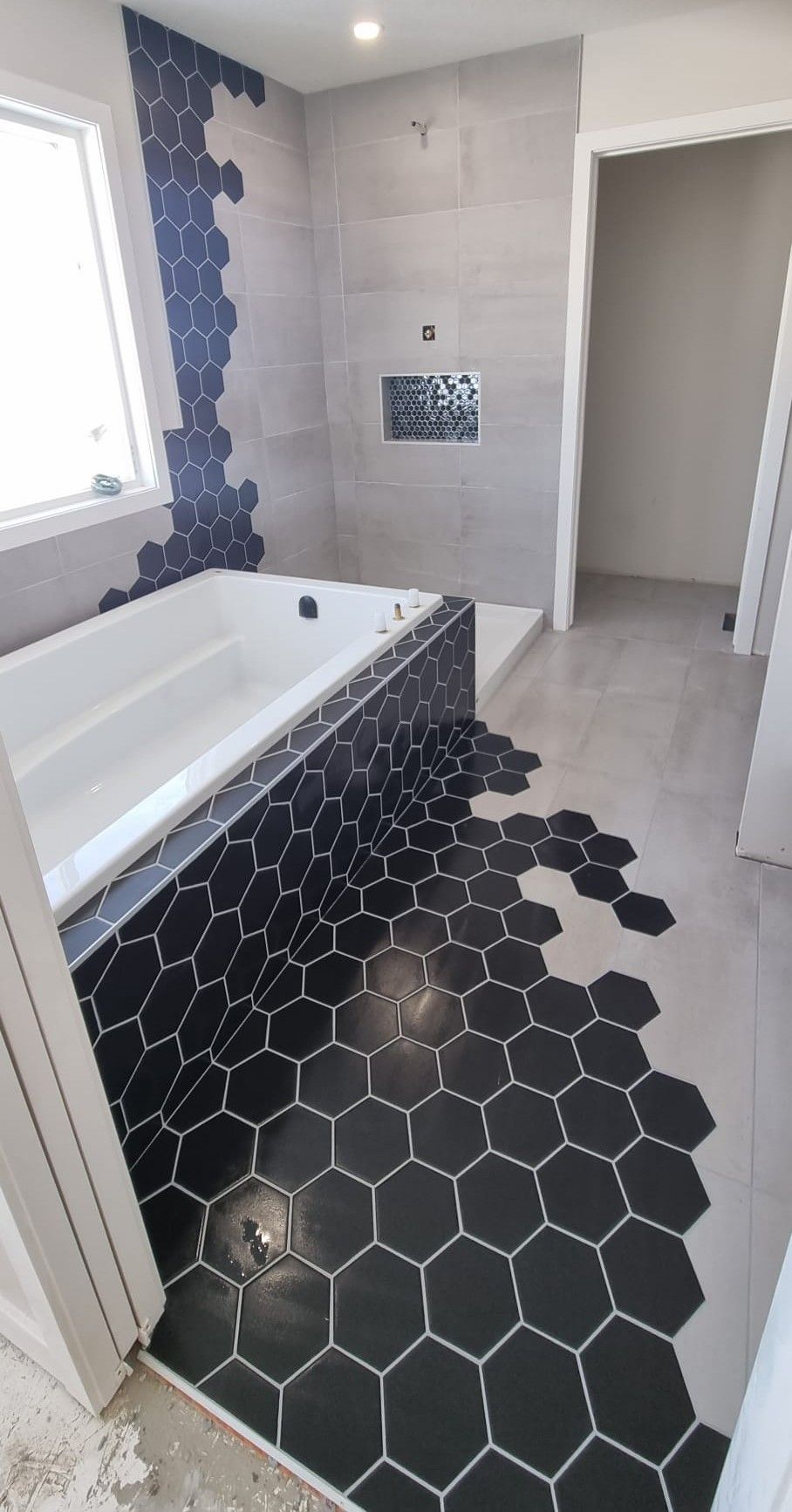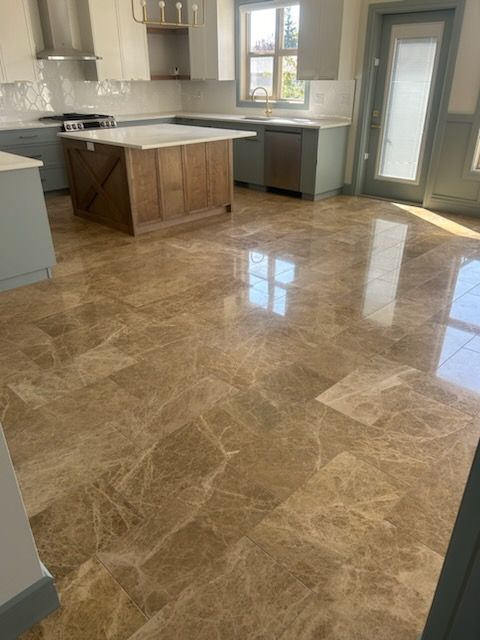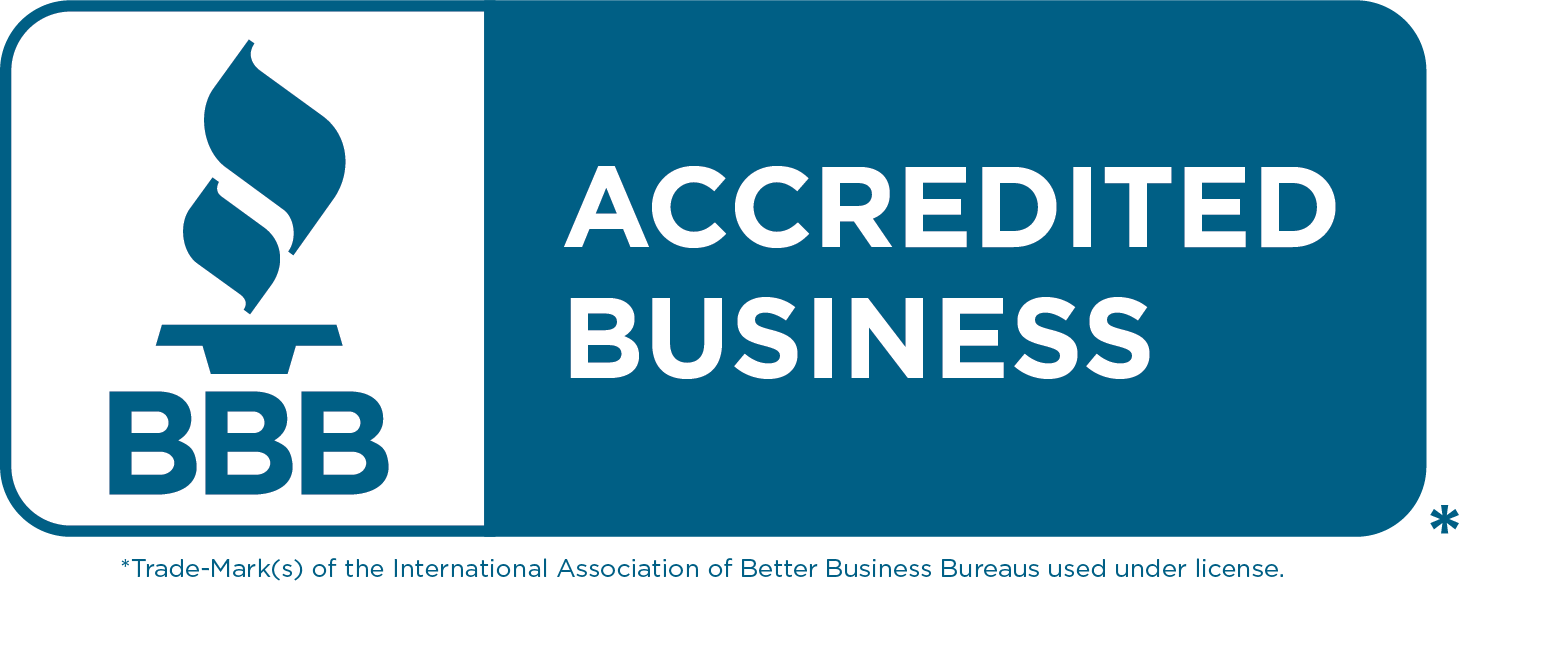Your Trusted Tile Setters in Sherwood Park & Greater Edmonton
★★★★★
Rating
Based on 47 Google, Bark and HS reviews
Fully
Insured
$5M in Liability Coverage
$25k General Surety Bond
500+
Projects
Completed for homeowners and top home builders in Alberta
Free
Estimates
We provide free consultations and estimates
We believe that tile setting is an art and take our tile installation projects very seriously. Our installers plan each installation and account for numerous technical and esthetic factors, resulting in the delivery of beautiful, functional, and lasting results.
The process requires precision and patience, starting with proper surface preparation and ensuring that substrates are level, clean, and structurally sound. Planning includes selecting the correct waterproofing, uncoupling, mortar and trim, which will be appropriate for the tile selected and the environment in which it is being installed.
Mastering tile spacing for consistent grout lines, and cutting tiles accurately and with the right tools is what often makes a professional install stand out. Our highly experienced setters account for patterns, tile alignment, and adjacent elenents, blending technical know-how with an eye for detail to achieve a durable, polished result.
Layout
Tile layout options play a critical role in the final look of a project, providing an opportunity to create a very different results with the same tile, matching a client's personal sense of style.
Appropriate layout choices depend on room size, tile dimensions and shape, as well as other finishes present in a given space. For instance, large rectangular tiles oriented vertically can create the visual illusion of height, making rooms appear taller and more spacious. Intricate patterns like herringbone and basketweave can draw the eye to the room's best features.
With any pattern, planning is key, as it's important to avoid awkward cuts or tile slivers at the edges. A well selected layout elevates the design, making even a simple tile project come together and appeal to the eye.
Waterproofing
Waterproofing in tile setting is critical, especially in moisture-prone areas like bathrooms, as it helps prevent water penetration and ensures long-term durability.
The choice of waterproofing membranes—liquid-applied coatings or sheet membranes like Schluter-KERDI depends on the project’s specifics and substrate.
Following best practices, such as overlapping seams properly, and extending coverage up walls or around fixtures, is non-negotiable; shortcuts can lead to leaks, moisture damage, or tile failure. When done correctly, effective waterproofing ensures durability, protecting the underlying structure and maintaining the tile installation’s integrity for decades, even under constant water exposure.
Material Selection
Tile material options vary widely, each suited to specific applications based on durability, water resistance, and texture.
Ceramic tiles, affordable and versatile, work well for both walls and low-traffic floors, though their porosity limits use in wet areas unless glazed.
Porcelain tiles, denser and less porous, is ideal for high-traffic floors, steam showers, and outdoor spaces due to its strength and water resistance—look for a water absorption rate below 0.5% for steam environments.
Natural stone like marble or travertine brings luxury to walls and floors but requires sealing to resist moisture and stains, making it less practical for steam showers unless meticulously maintained.
Glass tile shine on walls or as accents in showers, offering a sleek, waterproof finish, though their slipperiness rules out floors.
Matching material to application ensures both performance and longevity, balancing practicality with style.
Uncoupling
Uncoupling membranes are a game-changer in floor tile installation, designed to prevent cracking and damage by isolating the tile layer from stresses in the substrate.
Products like Schluter-DITRA feature a grid-like structure that bonds with thinset mortar while allowing slight movement in the subfloor below your new tile floor. This is crucial because floors, especially over concrete or wood, expand, contract, or shift due to temperature changes, moisture, or settling; without an uncoupling layer, these forces transfer directly to the tiles, leading to cracks or loose grout.
Installing these membranes properly—ensuring full mortar coverage and a stable, flat substrate—maximizes their effectiveness. By absorbing these stresses, uncoupling membranes boost the floor’s durability, making them essential for large-format tiles, radiant-heated floors, or installations over tricky surfaces, ensuring a long-lasting, flawless finish.
Get in Touch
Are you ready to bring your home improvement dreams to life? We’d love to discuss your project ideas and provide a free consultation. Reach out to us today and let’s start creating beautiful spaces together!




